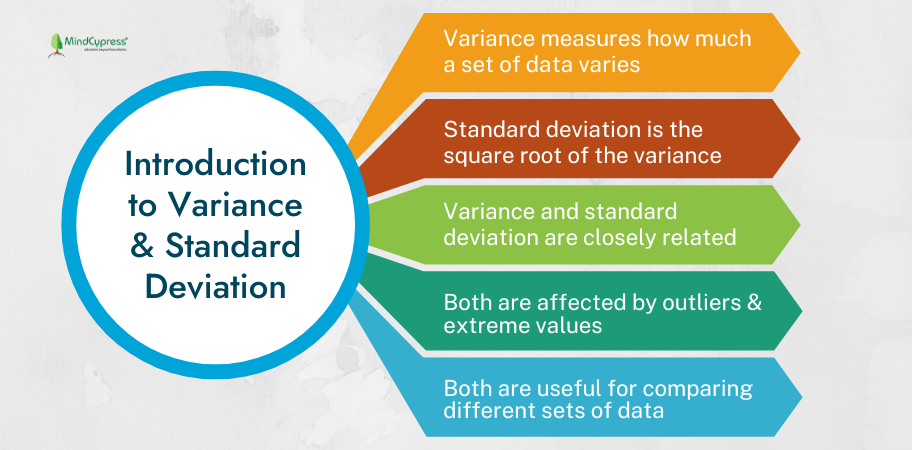Joining Six Sigma Training to Understand Variance and Deviation
Individuals enroll in Six Sigma training for a variety of reasons. Many of these reasons are related to their desire to advance their careers and enhance their organizations. First off, Six Sigma training gives people the chance to advance their knowledge and abilities in statistical analysis, problem-solving strategies, and process improvement procedures. This improves their chances of landing a job and gives them useful tools to help them be more productive and successful in their positions.
In this blog, we will learn why it is important to join a Six Sigma Training for understanding Variance and Deviation.
Understanding and managing variance and deviation are essential in the Six Sigma quality management. It drives process improvement and ensures consistent product and service quality. Two statistical measurements that shed light on the predictability, consistency, and stability of processes are variance and deviation.

What is Variance in Six Sigma?
Variance is a term used in Six Sigma methodology to describe the spread or dispersion of data points inside a process. It expresses the degree to which a single data point deviates from the data set's mean or average value. Variance is a key idea in Six Sigma since it aids in determining how predictable and consistent a process is.
Data points from a process with minimal variation are tightly grouped around the mean, a sign of stability and predictability. Conversely, data points from a process with a large variance are further dispersed from the mean, indicating a higher degree of variability in the process's results.
Six Sigma practitioners can find areas for process improvement and put plans in place to eliminate errors, limit variability, and maximize performance by assessing variation. Variance analysis is frequently carried out to create a baseline understanding of process performance and find areas for improvement as part of the Measure phase in the DMAIC (Define, Measure, Analyze, Improve, Control) approach.
What is Six Sigma Standard Deviation or Deviation?
In statistics and Six Sigma methodology, standard deviation, often referred to simply as deviation, is a measure of the dispersion or spread of data points within a dataset. It quantifies how much individual data points deviate from the mean or average value of the dataset.
Standard deviation is calculated by taking the square root of the variance, which is the average of the squared differences between each data point and the mean. Essentially, it provides a measure of the average distance of data points from the mean.
A smaller six sigma standard deviation indicates that data points are closer to the mean, suggesting less variability in the dataset. Conversely, a larger standard deviation indicates greater variability, with data points spread out more widely from the mean.
In Six Sigma, standard deviation is a key metric for assessing process performance and variability. By analyzing standard deviation, practitioners can identify areas of improvement, reduce defects, and optimize processes to achieve better outcomes. Standard deviation analysis is often conducted as part of the Measure phase in the DMAIC methodology. It is to establish a baseline understanding of process performance and variability.
Why Join Six Sigma Training or Classes?
Mastery of Statistical Tools
Six Sigma training provides participants with a comprehensive understanding of statistical tools and methodologies used to analyze process data, including variance and deviation. Through hands-on exercises and practical examples, participants learn how to calculate and interpret these metrics to assess process performance effectively.
Problem-Solving Skills in Six Sigma Training
Six Sigma training or classes equips individuals with a structured problem-solving methodology. It includes DMAIC, which enables them to identify root causes of process variation and implement data-driven solutions to address them. By understanding the role of variance and deviation in process improvement, participants can drive meaningful change and achieve measurable results.
Process Optimization
By mastering variance and deviation analysis, Six Sigma practitioners can identify opportunities for process optimization and waste reduction. From streamlining manufacturing processes to enhancing product quality, it provides a systematic approach to driving continuous improvement and maximizing efficiency.
Career Advancement through Six Sigma Training
Six Sigma certification has a wide recognition and value among employers across industries. By completing Six Sigma training and obtaining certification, individuals demonstrate their proficiency in process improvement methodologies. It further enhances their career prospects. It can open doors to a wide range of career paths and advancement opportunities.
Joining Six Sigma Training for Career Success
Enrolling in Six Sigma training is a wise investment in your career advancement and the success of your company. Individuals may effectively increase process performance, augment organizational efficiency, and realize their professional objectives. The training provides insights and growth opportunities to broaden the skill set or pursue certification as a Six Sigma practitioner.
